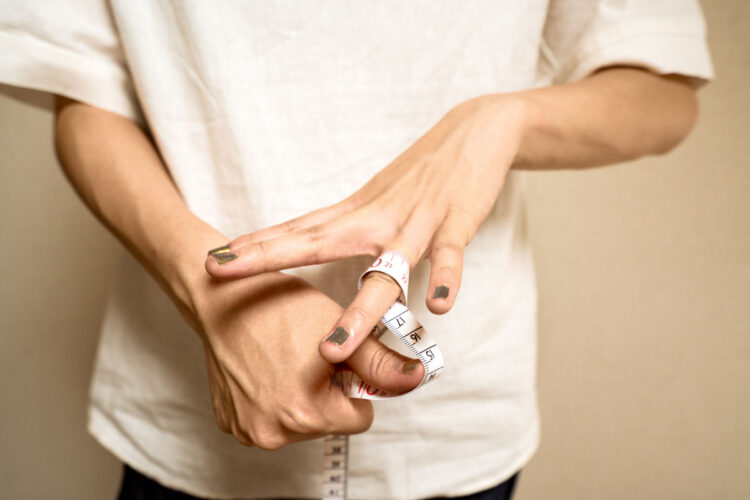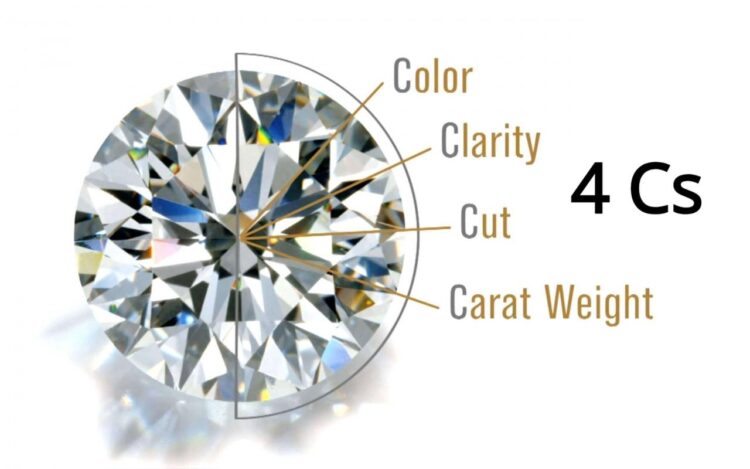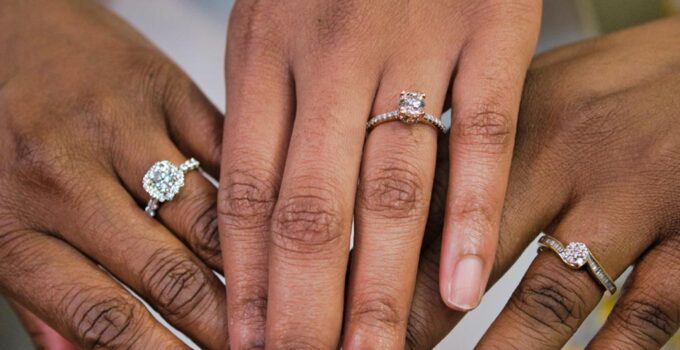You’d think that choosing an engagement ring would be easy after all the hard work of finding the right person to spend the rest of your life with it. However, it can be difficult for many of us to select the ideal engagement ring. There are countless patterns to choose from (many of which, to the inexperienced eye, can appear to be very similar), and there is also a tonne of new vocabulary to master. Consequently, it’s normal to feel overawed or even terrified by the idea of choosing the ideal engagement ring.
It is the reason why the engagement ring buying guide is so extensive. We will walk you through all the information you need about purchasing an engagement ring, from cuts to carats and settings to forms. Continue reading to discover some priceless advice on selecting an engagement ring, what to look for in a diamond engagement ring, and how to avoid common blunders. It is a helpful guide if you’re purchasing a ring as a surprise for your significant other, but remember that you can also use it if you’re picking out an engagement ring for yourself or going ring shopping with a partner.
Page Contents
1. Measure the Size of Your Ring
The ring should be easy to slip on during a proposal yet have enough resistance to keep it from falling off while getting worn. When a couple of shops are together – it gets easy to choose the perfect ring size, but it might be more challenging if the proposal is a surprise. Measure your finger or the finger of your future spouse, then compare the measurement to the appropriate ring size indicated on the chart.
Ring sizing guide

Source: diamondcastlejewelers.com
While determining your ring size is one thing, doing so if you want to keep the purchase a surprise is quite another. Here are some tips to assist you in knowing the ring size of your prospective bride without letting them know about your intentions: Ask your partner’s family and friends for assistance.
If you ask someone close to your partner who is well acquainted with them, you might be fortunate enough that they already know the solution from prior discussions.
Count it when they are sleeping
If they are light sleepers, this one can be challenging, but if you’re feeling sneaky, try putting a piece of string around their finger while they sleep and using the measurements listed above to determine their size.
2. Determine your budget
When picking an engagement ring, thus your budget will probably come first and foremost. As a result, how much money do you have to spend after looking at your accessible resources? To ensure that you get not set your budget too high or too low, thus, it could be wise to ask friends and family members whether they mind sharing how much they have spent on engagement rings. Please remember that you should only consider their comments as a general guide.
What sort of price range should you aim for them?
You’ve probably heard that the cost of an engagement ring should equal one to two months’ worth of salary. It’s just something that some individuals choose to do, though. There are no guidelines, and the sum you spend does not always indicate how deeply you love or are committed to someone.
How much money do you have to spend on a wedding band?

Source: elegantthemes.com
The most important thing while looking for an engagement ring is to keep your spending within your means. No matter how modest or extravagant your budget is, MoissaniteCo has stunning engagement rings to fit it. Include a small buffer in your budget or have a rough notion of your absolute upper limit in case the ideal ring materialises. You’ll probably find it easier to narrow down your alternatives if you’re clear on your top price.
3. Decide on a style of engagement ring
Purchasing an engagement ring advice for men:
Ground zero is where you should try to tie something down first. If you’re travelling alone, attempt to pick a look that complements her current jewellery preferences. A traditional solitaire design gets going to win if she is more of a classic female. There will undoubtedly be a wealth of information regarding the sorting ring she likes.
For the ladies:
Try on as many different designs of engagement rings as you can. Look for your favourite elements in each pattern. A talented jeweller will be able to create your dream ring from all the things you adore. When you find “THE ONE,” you’ll know because the design will make your heart skip a beat.
Forget about the diamond’s size, quality, and price – at this point in your trip. You risk missing your ideal ring if you consider items inside a specific price range. Once you’ve chosen the engagement ring of your dreams, a skilled jeweller should be able to alter the design to fit any price range or stone size.
4. Know the four Cs

Source: engelsjewelryco.com
Knowing the four Cs—colour, clarity, cut, and carat weight—is the first piece of advice for purchasing a diamond engagement ring. The GIA-developed 4Cs function as the global standard for assessing diamond quality and facilitating diamond comparisons.
The 4Cs, in short, are:
Colour:
A diamond’s colour is rated on a scale from D to Z, with D denoting complete colorlessness and Z denoting mild yellow or brown. Less colored diamonds of this hue range are more uncommon and highly prized.
Clarity:
When knowing about a diamond’s clarity, the terms “inclusions” and “blemishes” get used interchangeably. On a scale from Flawless to Included, clarity gets rated.
Cut:
How well a diamond interacts with light depends on the quality of its cut. The brightness, scintillation, and fire of a diamond get determined by its dimensions, symmetry, and polish (flashes of colour).
Carat Weight:

Source: thediamondcenter.com
The apparent size of a diamond gets determined by its carat weight. Assuming the other Cs are comparable, a diamond with a higher carat weight is rarer and more costly.
Prioritising the 4Cs will enable you to swiftly whittle down your options and find the diamond that is ideal for you. Knowing which C you are willing to spend more on and C. You want to compromise can help you work with your budget.
From left to right, these fancy diamond shapes are pear cut, square emerald cut (also known as the Asscher cut), emerald cut, radiant cut, oval cut, marquise cut, and the cushion cut.





